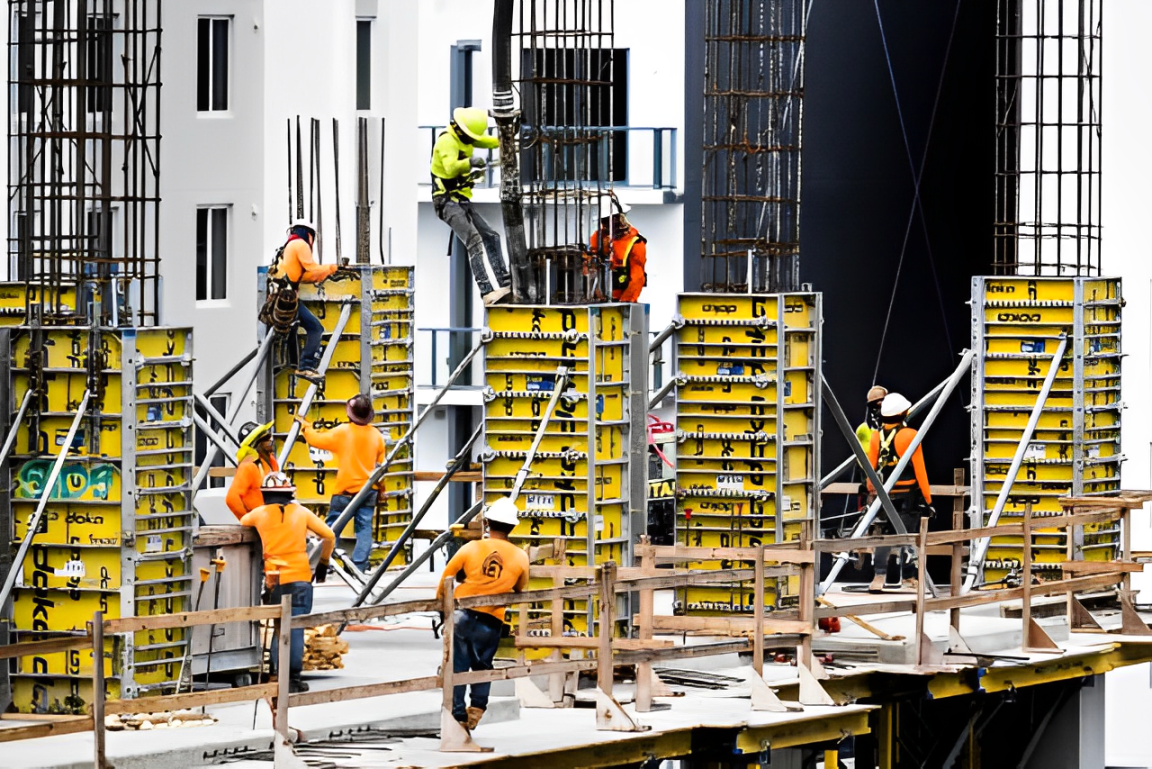The U.S. has a complex visa system that allows foreign workers to come and work in the country. These visa programs include several categories, each designed for a specific type of worker. The most common ones include H-1B, H-2A, and P-2 visas, to name a few.
These visas serve different industries and needs, from highly skilled tech workers to seasonal farm laborers. As the debate over immigration and foreign workers heats up, it’s important to understand these programs, their role in the U.S. economy, and how they are managed.
Visa Programs for Foreign Workers
The U.S. offers a variety of visa programs, allowing foreign workers to come for temporary employment. These visas are split into several categories, and each has specific requirements.
- H-1B Visa: This visa is meant for skilled foreign workers in specialized fields. Applicants must have a bachelor’s degree or its equivalent in a particular field. The U.S. tech industry is a significant employer of H-1B workers, but it also covers other professions like teaching, medicine, and engineering. This visa is valid for three years, with the possibility of being extended to six years.
- H-2A Visa: This visa is designed for temporary agricultural workers. It’s used when U.S. workers are unavailable for seasonal jobs like harvesting crops. The visa allows workers from 88 approved countries to come to the U.S. for a specified period, typically related to the agricultural season. Workers can stay for up to three years, after which they need to leave for at least three months before reapplying.
- H-2B Visa: Similar to the H-2A, the H-2B visa is for non-agricultural labor. It’s used for temporary, seasonal, or peak-load jobs. Common sectors that use H-2B workers include hospitality, retail, landscaping, and construction. These workers can stay for a period similar to H-2A workers, depending on the job’s need.
- O-1A and O-1B Visas: These visas are for people with extraordinary abilities in fields such as science, business, education, or arts. Celebrities, athletes, and high-profile professionals often use these visas to come and work in the U.S.
- Other Specialized Visas: There are also other visa categories for various needs. For instance, H-1B1 is for workers from Singapore and Chile, while the L-1 visa is used for internal company transfers.
The Role of These Visas in the U.S. Economy
Foreign workers play a crucial role in the U.S. economy. These visa programs help fill gaps in labor markets where U.S. workers may be unavailable or unwilling to take on specific jobs. For example, agricultural labor in the U.S. has become increasingly reliant on foreign workers, particularly because many Americans are not interested in low-wage farm jobs. This trend is made worse by an aging workforce in agriculture.
In addition, foreign workers on H-1B visas are vital in sectors like technology, healthcare, and education. They help meet the growing demand for skilled workers in STEM fields (Science, Technology, Engineering, and Mathematics). Although the overall number of foreign workers on these visas is small in relation to the total U.S. workforce, their contributions to key industries cannot be overstated.
For example, during the COVID-19 pandemic, many industries, including education and healthcare, faced severe worker shortages. Temporary foreign workers, particularly in teaching and nursing, stepped in to fill those gaps. As the U.S. continues to experience worker shortages in certain industries, these visa programs remain crucial in addressing the demands for labor.
Challenges and Criticisms of the System
Despite the benefits, the U.S. visa system for foreign workers has faced criticism. Some critics argue that foreign workers, especially those on H-1B visas, displace U.S. workers or depress wages.

They claim that companies might hire foreign workers at lower wages than U.S. employees, creating unfair competition. However, the U.S. government tries to mitigate these concerns by requiring employers to prove that hiring foreign workers won’t harm U.S. workers’ wages or working conditions.
Employers seeking H-1B workers must file a Labor Condition Application (LCA), which ensures they will pay the foreign worker the same wage as U.S. workers in similar roles or the prevailing wage for that job. Similarly, employers applying for H-2A and H-2B workers must demonstrate that they tried to recruit U.S. workers and couldn’t find qualified candidates.
The Impact of Foreign Workers on U.S. Labor
In 2023, over 800,000 temporary work visas were issued in the U.S. These workers make up a small percentage of the total U.S. workforce, but their importance in sectors like agriculture and tech cannot be ignored.
The labor shortages in these industries highlight the need for these workers. For example, the U.S. has seen a significant increase in the number of H-2A visa workers, especially in the agricultural sector, where American workers are not interested in taking low-wage, manual labor jobs.
Additionally, many of these foreign workers help support businesses that rely on their expertise or seasonal labor. Without them, certain industries would face severe disruptions. This is particularly true for agricultural industries, which rely heavily on H-2A workers to manage planting and harvesting seasons.
The Controversy Around Visa Caps and Immigration Policies
One major aspect of the visa system is the cap on certain types of visas. The H-1B visa, for example, has an annual cap of 65,000 visas, with an additional 20,000 available for workers with U.S. graduate degrees. The H-2B visa is capped at 66,000 workers annually.
These caps can create a bottleneck, with demand for visas exceeding the available number. This situation has led to calls for reforming the system to allow more foreign workers to come to the U.S. to fill labor gaps.
Critics of the current system argue that it is too restrictive and limits the U.S. economy’s potential growth. They believe that more foreign workers could help meet labor shortages in various sectors, including agriculture, technology, and healthcare. However, supporters of the current system argue that it is important to protect U.S. workers’ jobs and wages and prevent the exploitation of cheap labor.
Conclusion
As debates about immigration intensify, the role of foreign workers in the U.S. will continue to be a point of contention. While the U.S. economy benefits from these workers, there are valid concerns about their impact on wages and job opportunities for U.S. citizens.
Nonetheless, the visa programs that allow foreign workers to come to the U.S. are vital to meeting labor demands, especially in industries that suffer from labor shortages. As the economy continues to grow and evolve, these visa programs will likely continue to play an important role in supporting U.S. businesses and industries.
Disclaimer: This article has been meticulously fact-checked by our team to ensure accuracy and uphold transparency. We strive to deliver trustworthy and dependable content to our readers.







Leave a Comment